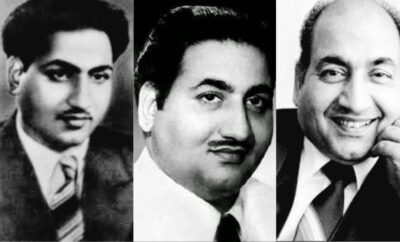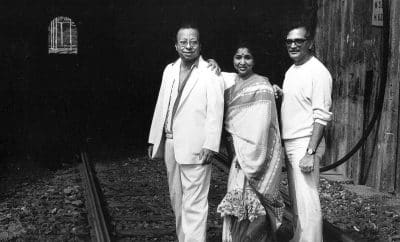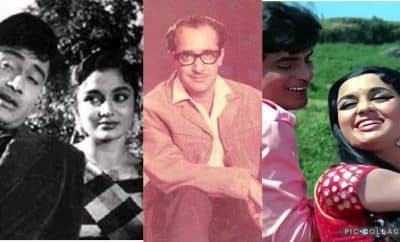Legends
Anil Biswas – The Patriarch Of Hindi Film Music
1930s was the time when Indian cinema was dabbling, struggling with various aspects like music, playback singing, dubbing etc. On the other hand some stalwarts were also experimenting with camera, lights, focus, dialogues etc. To make it short, Indian cinema was still at a caterpillar stage, it was crawling and working hard to acquire wings and fly. Though after the first sound film Alam Ara, there was no looking back. 1930s gave us the first singer in form of Wazir Mohammed Khan. 1930s also gave us K.L.Saigal and Pankaj Mullick. On one hand if Hindi cinema was growing technically on the other hand it was also growing aesthetically to the delight of music lovers. Hindi cinema grew from actors singing their own songs to actors lip syncing the songs. Singing evolved in such a way that it acquired a new branch in form of playback singing. With some dedicated artists working round the clock, Hindi film music slowly began to take shape. Hindi film music cannot be imagined now without a full fledged orchestra. But at the initial stage, the film music was theatre styled with only harmonium, tabla and violin as the accompaniments. It was Anil Biswas who introduced a 12 piece orchestra in Hindi film music. Not only that, he re-styled the art of playback singing nurturing talents like Lata Mangeshkar, Talat Mahmood, Mukesh. If this was not enough, he was the first to use western styled orchestra, counter melody and started the use of Raagmala. Rightly given the name of Bhishma Pitamah of the music industry, Anil Biswas still remains an unsung hero. Digging into his works one realizes that just one article is not enough to pay tribute to this stalwart. Every aspect of his work needs an independent tribute.
Born on 7th July 1914, in a small town of Barisal (Bangladesh) in a family where his mother was a naturally gifted singer, Anil Biswas took to music as fish takes to water. At the age of 5, he was already singing, at the age of 6 or 7 he was already playing the tabla and he was an accomplished all rounder musician while he was still a teenager. In the early 30s, he was working with Rangmahal Theatre in Calcutta and had mastered khayal, thumri and dadra style of singing and in 1935 he got his first independent film Dharam Ki Devi. With a deep understanding of classical music, Anil Biswas used to sing more often in the initial stage of his career. Compared to fellow composer-singers like Pankaj Mullick, S.D.Burman and Hemant Kumar, Anil Biswas remains less celebrated in this category too. We celebrate Anil Biswas – the singer in this particular article. Enjoy the songs rendered by the Patriarch of Hindi film music, Anil Biswas.
1. Ek Hi Rasta (1939) –
2. Aurat (1940)
3. Bahen (1941)
4. Apna Paraya (1942)
5. Jwar Bhata (1944)
6. Bhookh (1947)
7. Aarzoo (1950)
https://youtu.be/d2uI0YkaaBo
8. Abhiman (1957)
https://youtu.be/-nG2gflEIg0
9. Sautela Bhai (1962)




Pingback: Carnival of Blogs on Golden Era of Hindi Film Music – July 2019 – The world is too small? or Is it?